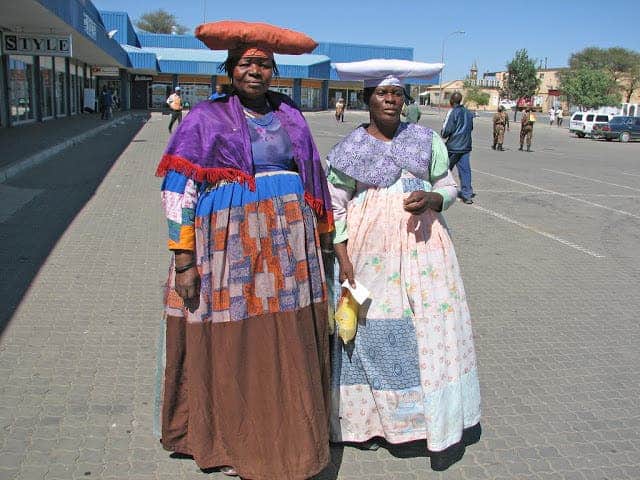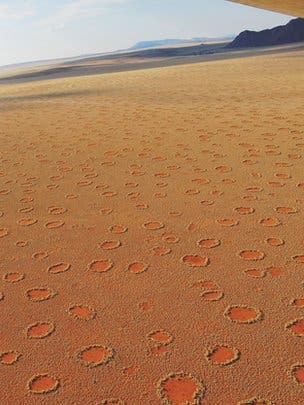Fairy circles, or fairy rings as they have sometimes been called, are known to many cultures around the world and pose various mystical significance. Some consider them a spawning pool for elves, fairies or pixies, hence their name. In Europe and North America they are most of the times formed by mushrooms, as most people know, and comprise a rather rare sight. After all, how many times does a fairy choose to make an appearance ? In Namibia however – there must be a lot of fairies – as there are millions of circles in the grasslands there.
The circles can also be found in southern Angola or northern South Africa, but most of them are found in Namibia. In 2005, while on a vacation to the NamibRand Nature Reserve, the circles caught the attention of Dr. Walter Tschinkel, a research professor of biological science and a leading entomologist at Florida State University.
![In the oral myths of the Himba people these barren patches are said to have been caused by the gods, spirits or natural divinities. [Via io9.com]](https://cdn.zmescience.com/wp-content/uploads/2012/11/medium.jpg)
“I looked at them and said, ‘obviously, they’re caused by termites,” but as he analysed the circles more closely, he wasn’t able to find any termites or other insects in or near the circles. He and his wife tried to look at the quality of the soil inside the circles in comparison to the soil where the grasses grow. They conducted several experiments such as adding essential nutrients like zinc inside the circle or replacing the soil inside a circle with some of the soil outside and vice versa – only to reveal the same thing: that the soil inside the circles is not in any way different to the soil outside.
To understand how the circles evolved over time, Dr. Tschinkel compared satellite images taken over a 4-year period and saw how the circles seemed to grow or disappear. Extrapolating from the observed photos, he estimated that most of the smaller circles’ life cycle appeared to last about 24 years, while the larger ones’ was up to 75 years.
In the oral myths of the Himba people these barren patches are said to have been caused by the gods, spirits or natural divinities. Unfortunately, the very little scientific observations and investigations done so far on these mysterious circles are mostly based on opportunistic experiments done on quick trips. Tschinkel says, “there’s no program really focused on trying to figure this out.” In the future, he hopes to return to the region to investigate further at different times of the year, as some of the satellite data seem to indicate that the circles tend to appear after the rainy season.
![African fairy circles as they appear after a period of rain [Via livescience.com]](https://cdn.zmescience.com/wp-content/uploads/2012/11/low-view-fairy-circles-after-rain.jpg)
So, until someone catches a pixie in Namibia, “the mystery of the fairy circles” continues to remain a mystery.
[Via Science Magazine]




